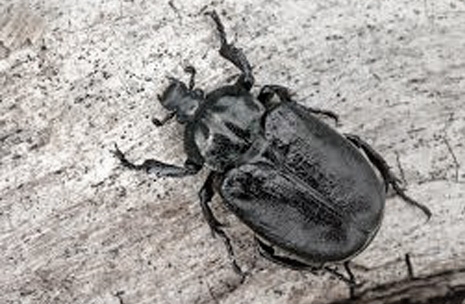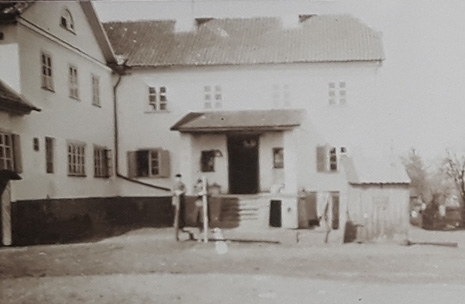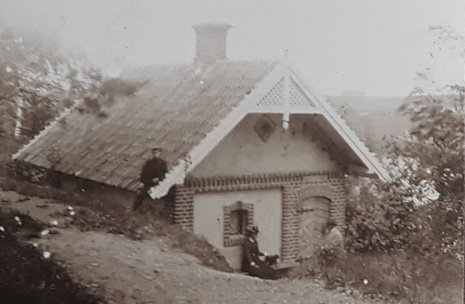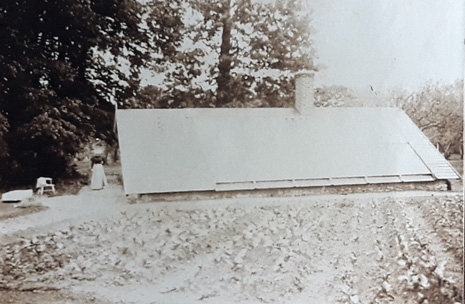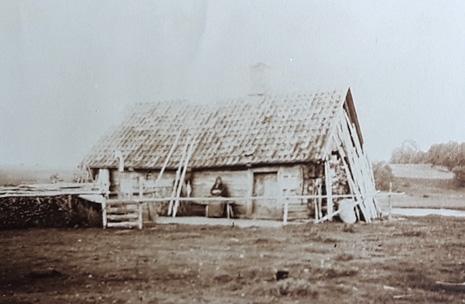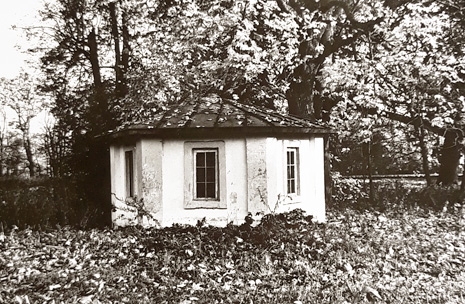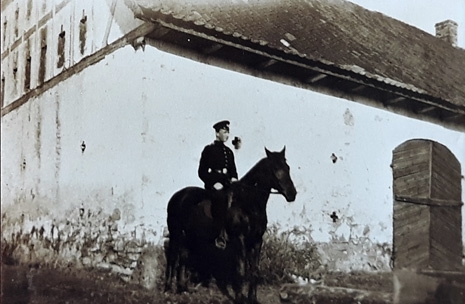- 1. lord's house
- 2. shed
- 3. barn
- 4. granary
- 5. manager's house
- 6. cowshed
- 7. threshing barn
- 8. granary
- 9. threshing barn
- 10. garden pavilion
- 11. greenhouse
- 12. bathhouse
- 13. old pavilion
- 14. servant's house
- 15. forge
- 16. family tomb
- 17. cellar
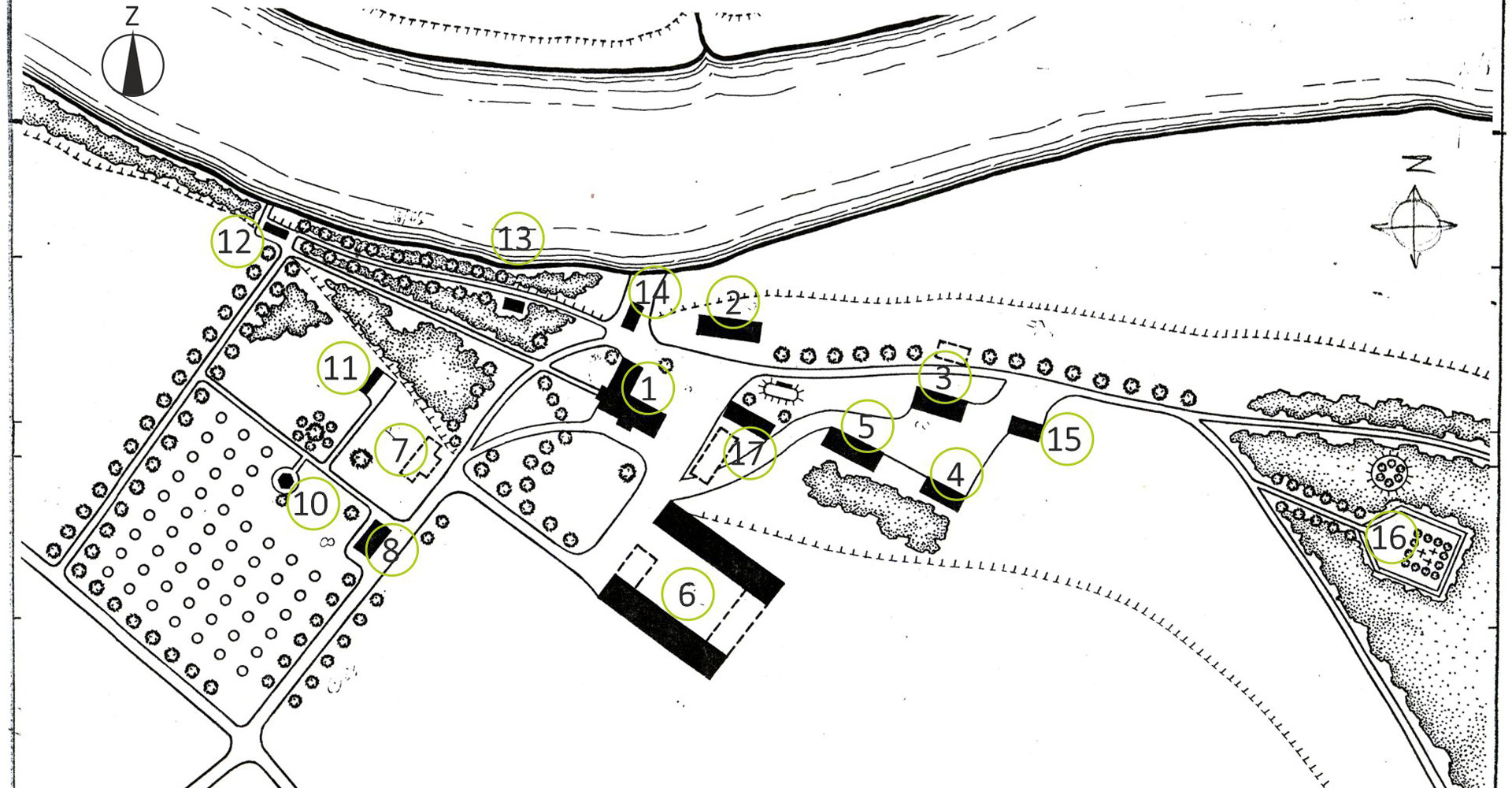
Pamūša manor in the context of Zemgale (Semigallia)
Pamūša Park has been granted the status of a natural monument and protected dendrological plantations
On December 18, 1848, Pamūša was purchased by the Mayor of Riga Heinrich Karl Johann von Bötticher. During this family reign most of the manor buildings and greenery were made.
Of all the manor buildings, only the manager's house has survived in its original appearance.
The bathing house was located in a romantic place on the bank of the Mūsa on a sloping cliff, thanks to which it was possible to sit on one side of the roof, while on the other a raised facade is formed.
The heated greenhouse supplied the manor family with fresh flowers and berries almost all year round.
The shed was located on the very bank of the river Mūsa.
Until the end of the 20th century a pavilion built in the second half of the 19th century - a simple hexagonal building stood in the garden.
The small size and small decoration of the pavilion suggest that it served as a gardener's house during the fruit harvest.
Until the fire of the 1980s, the old pavilion , a two-story dolomite and a brick building stood on the bank of the Mūsa, where four corner posts on the second floor supported a four-sloped roof and included white-painted railings.
There was also a granary (magazīna) in the middle of the driveway of very simple construction with a lattice roof endings.

